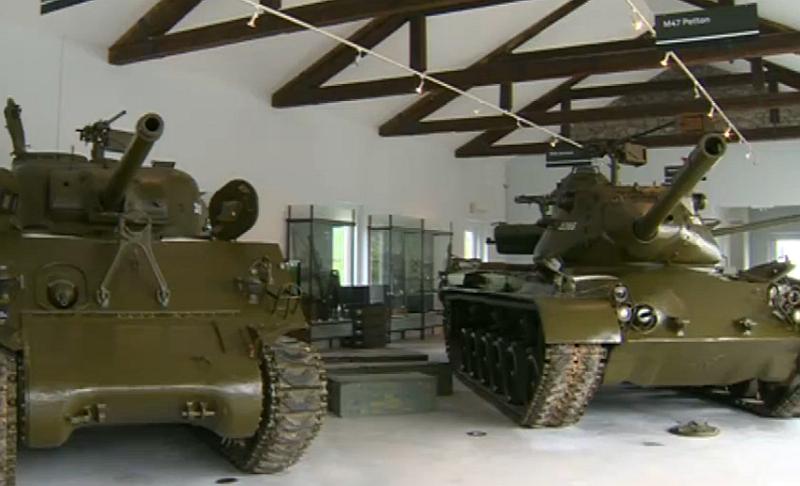
On May 30, 2014, some Slovenian drivers were treated on an unusual sight: Rolling down Slovenia’s roads on large trucks were the two halves of a fighter jet. The airplane was a Yugoslav-built Orao (“Eagle”) – developed in the 1970s and first flown by a Slovenian -- and it was driven to Slovenia from Romania, where it had last been in use at the turn of the century. Its destination was the Park of Military History near the Slovenian town of Pivka, where it joined other exhibits covering decades of military history in Slovenia and Yugoslavia.
The Park of Military History has its origins in a war. In 1991, Yugoslavia tanks rolled out of the sizeable Pivka barracks in an effort to crush Slovenia’s nascent independence. There campaign was a failure. Slovenia became independent, but the Pivka barracks, too large for the Slovenian armed forces, remained empty for years.
In 2004, however, local authorities joined up with the Ministry of Defense to create a new tourist destination in the abandoned barracks: a park devoted primarily to military equipment. The first exhibit hall opened in 2006 and with the help of EU funds, the park of Military History has expanded through the years to become a popular regional attraction in a remote town where tourism had previously been almost non-existent.
Today, visitors to the Park of Military History can view a multimedia presentation before heading out to view on extensive collection of tanks and other armored vehicles, some dating back to World War II. A few of the more recent vehicles, such as the M-84 tank, were made in Yugoslavia with substantial contributions by Slovenian companies.
One of the most popular exhibits is the Republic F-84G Thunderjet fighter-bomber. The American jets saw wide use in the Korean War, but 167 of them were also given to Yugoslavia as part of U.S. military aid in the 1950s, after the country had broken ranks with the Soviet Union. The aircraft on display in Pivka – one of those 167 jets -- arrived at the museum in June 2013.
The largest item on display, however, is not an aircraft but a submarine. Dating from the 1980s, the P-913 was built in Yugoslavia, and was, in large measure, a product of Slovenian know-how. Capable of carrying as many as ten crew members, the submarine was intended primarily to lay naval mines in case of an attack on Yugoslavia. After the breakup of the country, this particular craft – known as “Zeta” – ended up in Montenegro, but was given to Slovenia by the Montenegrin government in 2011. (It has to be transported to Slovenia through Italy to prevent it for being seized by Croatia, whose government considered the submarine post-Yugoslav property subject to succession negotiations.)
Ever since it was opened to the public, the submarine has been a huge hit – so much so that advance reservations are requested specifically for this exhibit. Visitors can even enter the craft in small groups and experience the claustrophobic conditions faced by its crew as the submarine made its rounds in the Adriatic Sea.
Visitors can also see photographs chronicling the Slovenian Spring – the democratization movement of the late 1980s that eventually led to Slovenia's independence. Those turbulent years led to the creation of the Slovenian Armed Forces, and after years of shaping the military histories of other nations, Slovenians found themselves with a military to call their own.

































































